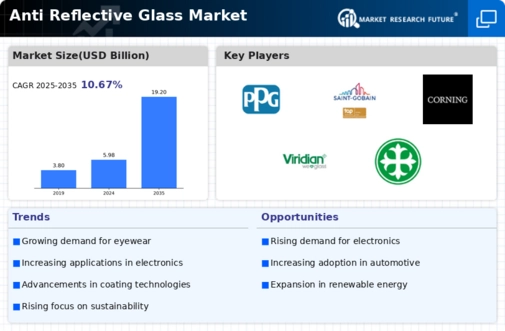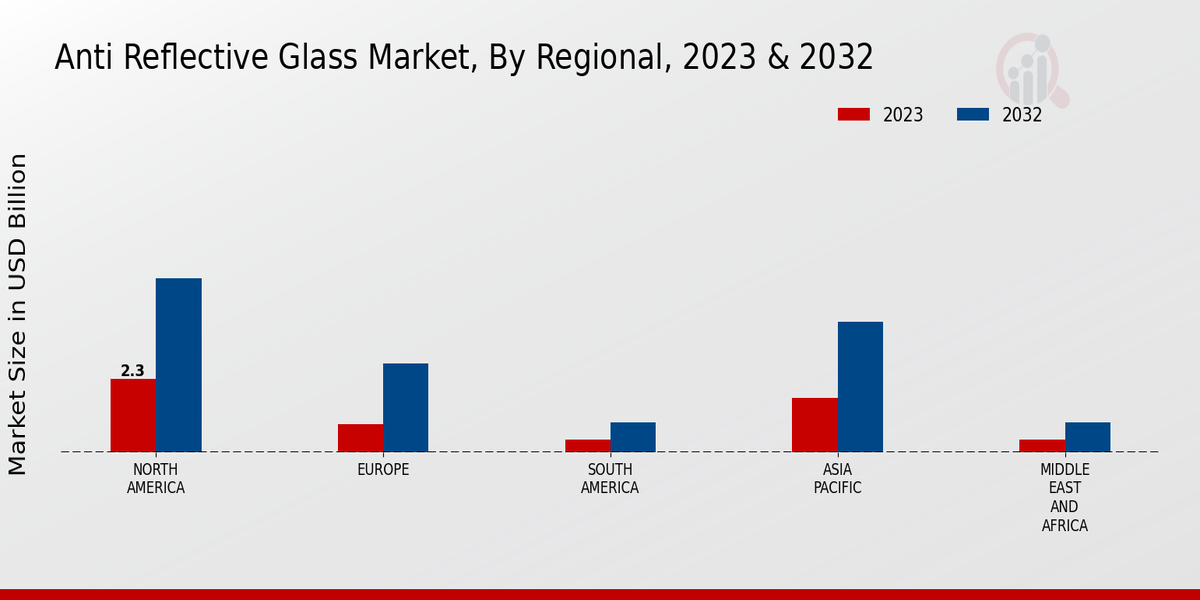Growing Demand in Electronics
The Global Anti Reflective Glass Market Industry experiences a surge in demand driven by the electronics sector. With the proliferation of smartphones, tablets, and laptops, manufacturers increasingly utilize anti-reflective glass to enhance screen visibility and user experience. This trend is particularly evident in the Asia-Pacific region, where the electronics market is projected to grow significantly. The market size for anti-reflective glass is expected to reach 5.98 USD Billion in 2024, reflecting the industry's response to consumer preferences for high-quality displays. As technology advances, the integration of anti-reflective coatings becomes a standard feature, further propelling market growth.
Expanding Applications in Healthcare
The healthcare sector is emerging as a significant contributor to the Global Anti Reflective Glass Market Industry. Anti-reflective glass is increasingly utilized in medical devices, surgical instruments, and diagnostic equipment, where clarity and precision are paramount. The demand for high-quality imaging and visibility in healthcare applications drives the adoption of anti-reflective glass. As the global population ages and healthcare needs evolve, the market is poised for growth. This trend highlights the versatility of anti-reflective glass, as it finds applications in various healthcare settings, thereby expanding its market reach and potential.
Increased Focus on Energy Efficiency
Energy efficiency is a significant driver for the Global Anti Reflective Glass Market Industry, particularly in the construction sector. Architects and builders are increasingly incorporating anti-reflective glass into building designs to reduce glare and improve energy performance. This trend aligns with global sustainability goals, as energy-efficient buildings contribute to lower carbon footprints. The market is expected to grow substantially, with projections indicating a rise to 19.2 USD Billion by 2035. The adoption of anti-reflective glass in commercial and residential buildings not only enhances occupant comfort but also supports regulatory initiatives aimed at promoting energy-efficient construction practices.
Rising Adoption in Automotive Sector
The automotive industry plays a pivotal role in the expansion of the Global Anti Reflective Glass Market Industry. As vehicle manufacturers strive to improve safety and aesthetics, the use of anti-reflective glass in windshields and windows is becoming increasingly common. This trend is particularly pronounced in electric vehicles, where enhanced visibility is crucial for driver safety. The market is projected to grow at a CAGR of 11.22% from 2025 to 2035, indicating a robust future for anti-reflective glass in automotive applications. The integration of advanced glass technologies not only enhances vehicle performance but also aligns with consumer expectations for modern design.
Technological Advancements in Coating Processes
Technological innovations in coating processes are transforming the Global Anti Reflective Glass Market Industry. Advances in nanotechnology and chemical engineering enable the production of more effective and durable anti-reflective coatings. These innovations enhance the performance of glass products across various applications, including optics and display technologies. As manufacturers adopt these advanced techniques, the quality and longevity of anti-reflective glass improve, attracting a broader customer base. The ongoing research and development in coating technologies suggest a promising future for the market, as companies seek to differentiate their products in a competitive landscape.

















Leave a Comment